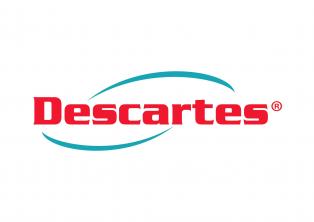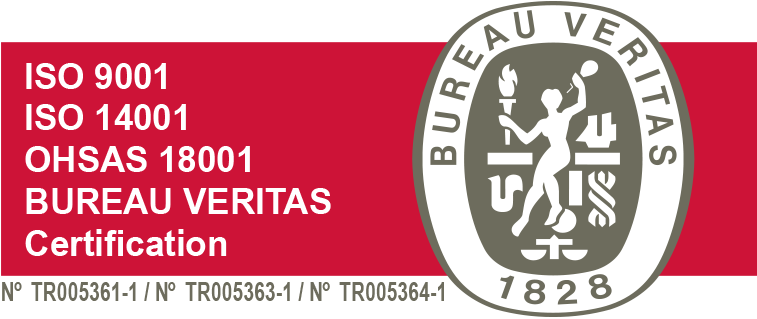Product Certificate and Label
| Name of Product | : DESCARTES |
| Active Substance | : 250 g/L Cypermethrin |
| Formulation Type | : Emulsion Concentrate (EC) |
| Group | : 3-A Insecticide |
| Environmental Effect | : Toxic to bees and fishes. Do not mix with ground water. |
| Antidote | : There is no specific antidote. Treatment is administered according to the symptoms. |
MARKET PRESENTATION: 100 CC, 250 CC, 500 CC, 1 L
PREPARATION OF THE PLANT PROTECTION PRODUCT TO BE APPLIED:
The Plant Protection Product calculated on the recommended dose is first mixed with some water in a separate container. The application machine tank is filled halfway with water. Medicated water is added to the tank while the mixer of the machine is running. While mixing process is continuing, the tank is completed with water. Mixing is continued until the application is completed. Use the prepared plant protection product on the same day.
CALIBRATION:
Calibration of the application machine should be done before the application. The amount of mixture to be given to a certain area should be well adjusted in order to provide a good coating. Applications should be done within cool hours of the day and in non-windy or near-calm conditions.
CLEANING OF APPLICATION MACHINE:
Empty the application machine safely immediately after the application. After filling the tank with clean water, run the mixer and spray system to wash all parts. Do not wash near water sources. Do not pour down water and waste into water sources.
USAGE OF PLANT PROTECTION PRODUCT:
The applications to be made against the codling moth should be directed according to the forecast and early warning system. The goal of the codling moth is to kill the larvae hatching from the eggs before they enter the fruit by keeping the trees medicated during the larvae output of each breeding. The prediction and early warning system in the pear is not taken into account.
Almost all of the eggs left by the fertile adults, who wintered against the pear psyllid, were opened and the second and third term nymphs started to be seen. An application may be sufficient when more than 15% of contamination is started, the flow of sweetish substance does not start, and natural enemies are scarce.
Against the Tree Redworm of Cherry, sexual traps are hung in the blur gardens and adult outlets are monitored. Disinfection is started in mid-August and early September, whenyoung larvaeare found in the colony at the end of the adult exit or just under the tree trunks. Depending on the duration of the drug, the second disinfection is done.
As a result of the weekly counts of 100 compound leaves against pistachio psyllid, an average of 20-30 nymphs per leaf is seen, when the majority of the eggs are opened and before the first adult parasitoid exit and the adhesive layer (fumajin) on the leaf surface.
Chemical struggle is decided according to the counts and evaluations made in the fields against the sunn pest in cereals.
Against corn worm and corncob worm,when the first egg is detected, it is applied. Following the first application, 3 more applications are made with an interval of 15 days.
Against green worm in sunflower, disinfection is started when eggs, first period larvae or first signs of damage are seen in 5 of 100 plants.
Tomatoes, Chickpeas and Lentils are entered into the field in the direction of diagonals against greenworm, and 50-100 plants are checked according to the size of the field, eggs and larvae are searched in the flowers, stems, fruits and shoots of the plant. If 5 of 100 plants are found blur, the application is done.
Against tobacco whitefly in tomato and eggplant is entered into the field in terms of diagonals, which is found to be contaminated with whitefly. In large-leaved plants, 50 leaves are collected from the lower, middle and upper leaves every 5 steps. Application is made when there are 5 larvae + pupae per leaf.
Against lentil legume seed pests, by taking into consideration the development of the variety in the fields known to be contaminated and the sowing time, as soon as the lower capsules are dry, 2-3 disinfections are made with 10-14 days intervals and contamination in the field is prevented.
In ornamental plants, against daffodil onion flies, when the plant height is 10 cm, approximately 1000 onions should be checked for each decare to represent the field and if the contamination rate is 5%, a fight should be made. When adult exits begin, second disinfection should be done for both pests 10 days after the first exit.
Against vine cluster moth, the applications to be made against bunch moth are determined according to the forecast and warning system. For larvicite application, the number of butterflies caught in the traps should reach the peak and fall, the total of effective temperatures should be 120 days-degrees in 1st generation, twilight temperatures should be 15 C and for 2 consecutive days, this should continue in the following days. The effective total temperature should reach 520 days-degrees in the 2nd breeding, 1047 days-degrees in the 3rd breeding, the phenology of the vine should be in the period of flower bud in the 1st breeding, sour grape in the 2nd breeding, and the beginning of sweetening in the 3rd breeding. Application is decided when the first larval outflow is seen. One application is performed for each germ.
After the start of the harmful grasshopper nymphs in the reservation against grasshoppers (Garsiyar) and determining the appropriate density in the surveys, chemical struggle is started immediately.
INFORMATION ON RESISTANCE:
DESCARTES is an insecticide classified as Group 3A according to its mechanism of action. Repetitive applications of plant protection products with the same mechanism of action promote resistance development. For this reason, to delay developing resistance, do not exceed the total number of applications recommended in the same season of DESCARTES. In cases where the application should be repeated, pay attention to the use of plant protection products with a different mechanism of action (other than Group 3A).
MISCIBILITY:
It can be mixed with some plant protection products except for strong alkaline plant protection products. It is recommended to make a preliminary mixture test before making a large amount of mixture.
| PLANTS THE PRODUCT WILL BE USED IN | |||
| PLANT NAME | HARMFUL ORGANISM NAME | APPLICATION DOSAGE | TIME BETWEEN LAST DISINFECTION AND HARVEST |
| Apple | Codling moth (Cydia pomonella) |
20 ml/100 L of water larvae | 7 days |
| Pear |
Pear pysllid |
20 ml / 100 L of water (2nd and 3rd Nymph period after crown leaves Are shed) | 7 days |
| Pistachio | Pistachio pysllid (Agonoscena pistaciae) |
25 ml / 100 L water (the first disinfection is made when 20% of the leaves are contaminated) | 7 days |
| Cherry | Tree red worm (Cossus cossus) |
80 ml/100 L of water Young larvae period | 7 days |
| Grain | Sunn Pest (Eurygaster spp) |
20 ml/da (1st-3rd Period) 30 ml/da (4th-5th Period nymph and new generation adult) | 7 days |
| Ornamental Plants | Narcissus onion flies (Eumerus narcissi, Meradon eques) |
80 ml/100 L of water | 7 days |
| Sunflower | Greenworm (Helicoverpa armioera) |
40 ml/da | 7 days |
| Tomato | Tobacco whitefly (Bemisia tabaci) |
30ml/da larvae-mature | 7 days |
| Greenworm (Helicoverpa armiqera) |
30 ml/da Larvae | ||
| Eggplant | Tobacco whitefly (Bemisia tabaci) |
30ml/da larvae-mature | 7 days |
| Corn | Corncob worm (Sesamia spp) |
30 ml / da Larvae (3 disinfectings are made every 15 days). (When the egg is first detected, disinfection starts.) | 7 days |
| Corn worm (Ostrinia nubillalis) |
|||
| Vineyard */** | Bunch moth(Lobesia botrana) | 20 ml/100 L of water (First application is made when butterfly activities start or when larvae damage is seen) | 7 days |
| Lentil | Legume seed beetle (Bruchus spp) |
40 ml/da | 7 days |
| Ash tree | American White Butterfly (Hyphantria cunea) |
25 ml/100 L of water Young larvae period | 7 days |
| General pests | Grasshoppers Lobesia botrana) |
40 ml/da | 7 days |
| Sugar Beet | Beet flea (Chaetocnema tibialis) |
25ml/da | 7 days |
| Leaf worms (Spodoptera exiqua, Mamestra spp., Plusia gamma) |
30ml/da | ||
| Shield bugs (Cassida spp.) |
30ml/da | ||
| Leaf beetle (Piesma maculata) |
30ml/da | ||
| Bozkurt Agrotis spp.) |
30ml/da | ||
* It is inconvenient to use in the Aegean Region.
** Can not be used in vineyards where vineyard leaves will be harvested for consumption.




